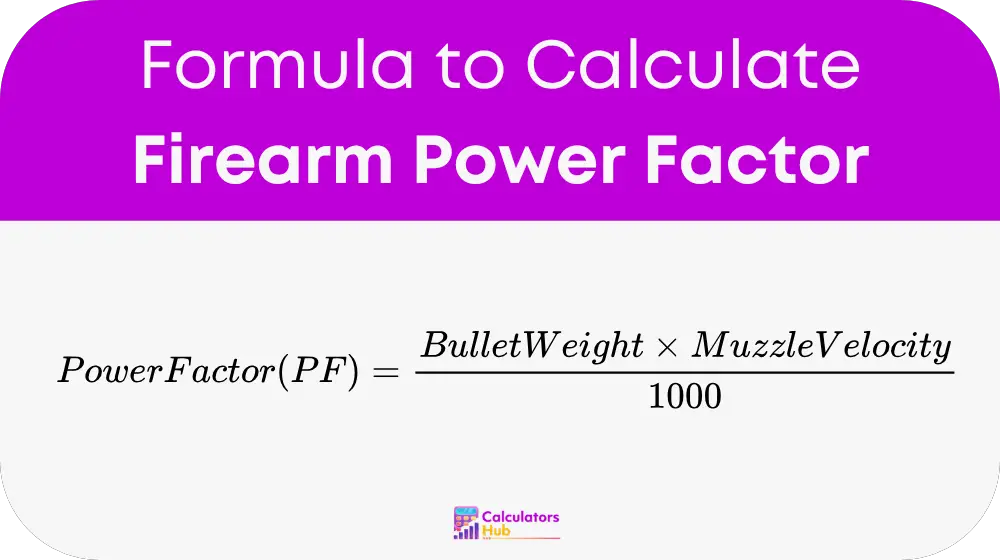The Firearm Power Factor Calculator helps shooters, handloaders, and competition officials quickly determine the power factor of a cartridge. Power factor is a simple measure used in shooting sports to classify ammunition as minor or major power. This affects scoring in sports like USPSA, IPSC, and IDPA. By calculating power factor, shooters can ensure their ammunition meets league requirements and performs consistently. This tool falls under the Ballistics and Firearm Performance Calculator category.
Formula of Firearm Power Factor Calculator
The basic formula is straightforward:

Where:
- Bullet Weight is in grains.
- Muzzle Velocity is in feet per second (fps).
- Dividing by 1000 converts the result to a standard unit used in competitions.
For example, a heavier bullet or faster velocity increases the power factor.
Reference Table
| Caliber | Typical Bullet Weight (grains) | Average Muzzle Velocity (fps) | Example Power Factor |
|---|---|---|---|
| 9mm | 124 grains | 1050 fps | 130 |
| .40 S&W | 180 grains | 950 fps | 171 |
| .45 ACP | 230 grains | 850 fps | 196 |
Use this table for a quick reference before competitions or handloading.
Example of Firearm Power Factor Calculator
Example Calculation
- Caliber: 9mm
- Bullet Weight: 124 grains
- Muzzle Velocity: 1050 fps
Step 1: Multiply bullet weight by muzzle velocity
124 × 1050 = 130,200
Step 2: Divide by 1000
130,200 ÷ 1000 = 130.2
Result:
Power Factor = 130.2
This means the round qualifies as minor power factor in most competitions.
Most Common FAQs
Power factor ensures fair scoring. Higher power factor ammo has more recoil, so shooters are rewarded with higher scoring if they handle it well.
Yes. A higher power factor usually means more felt recoil because it involves heavier bullets or higher velocities.